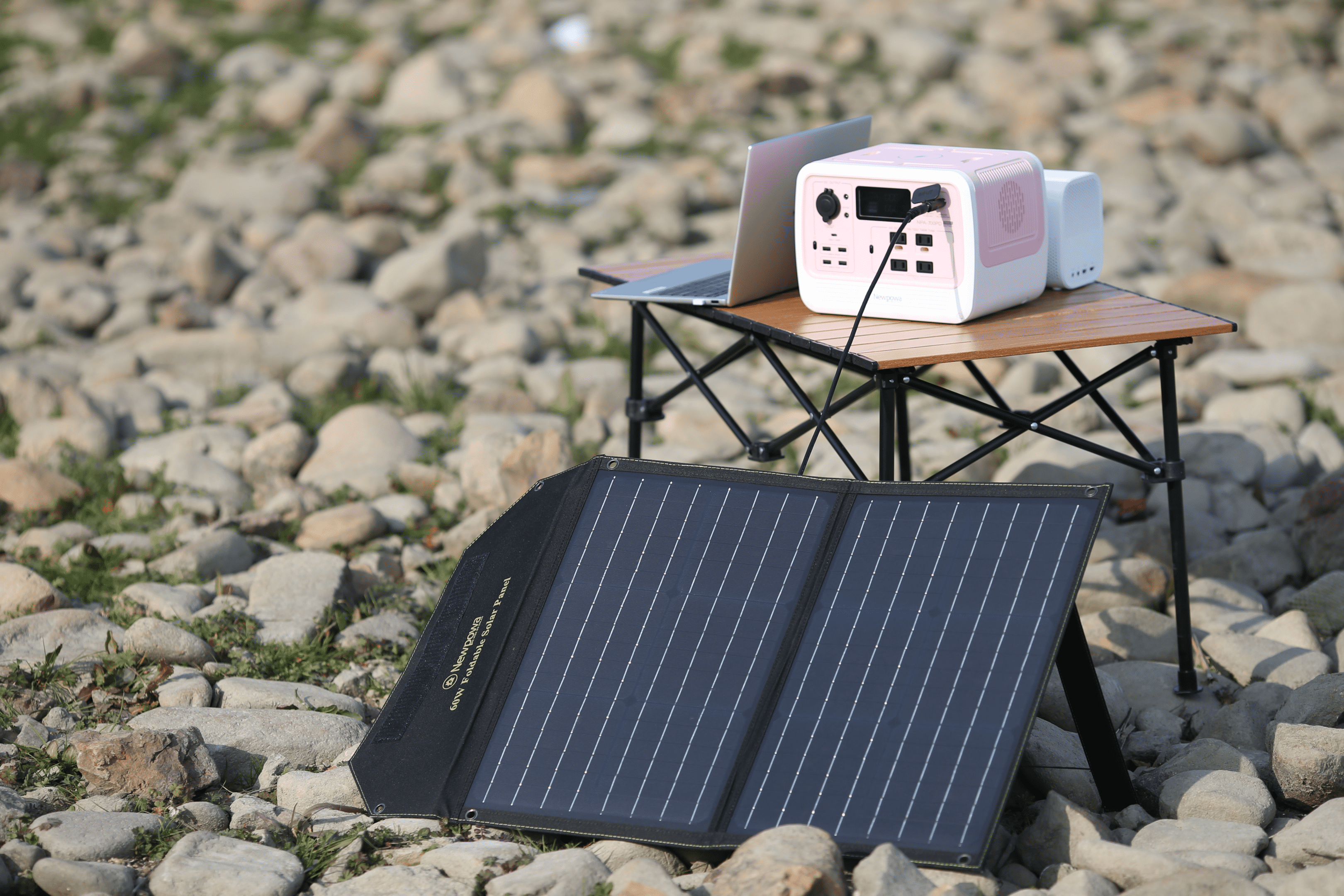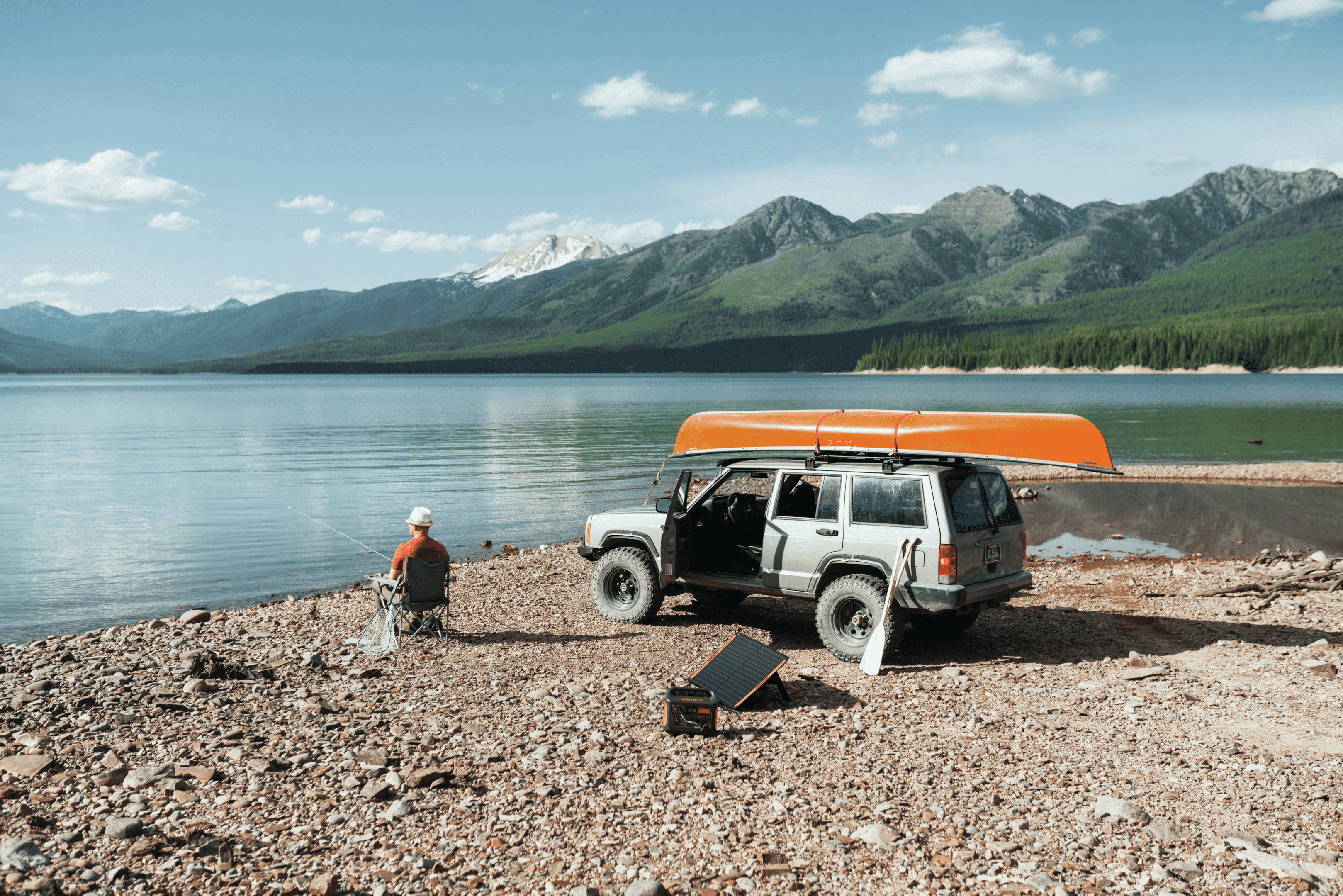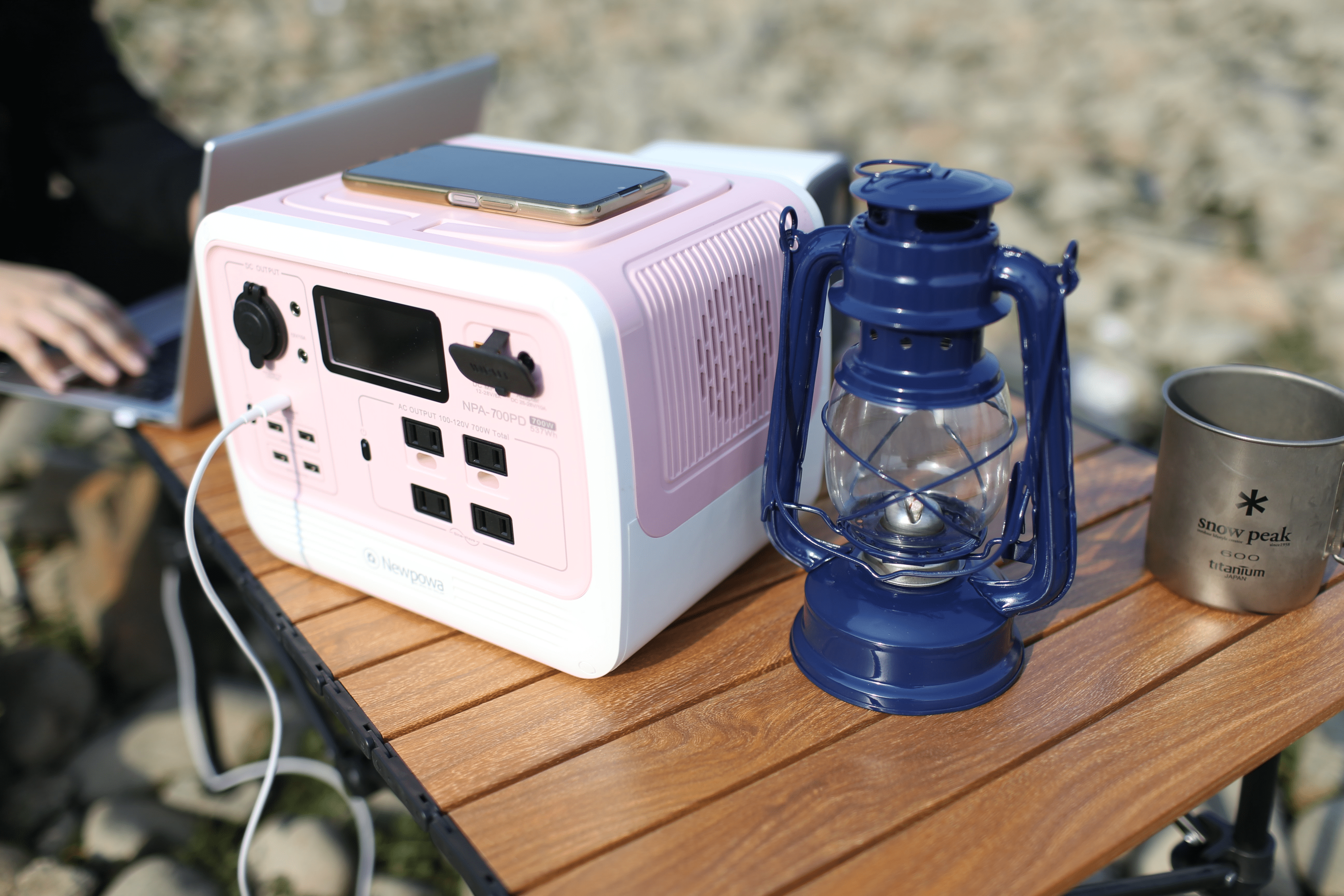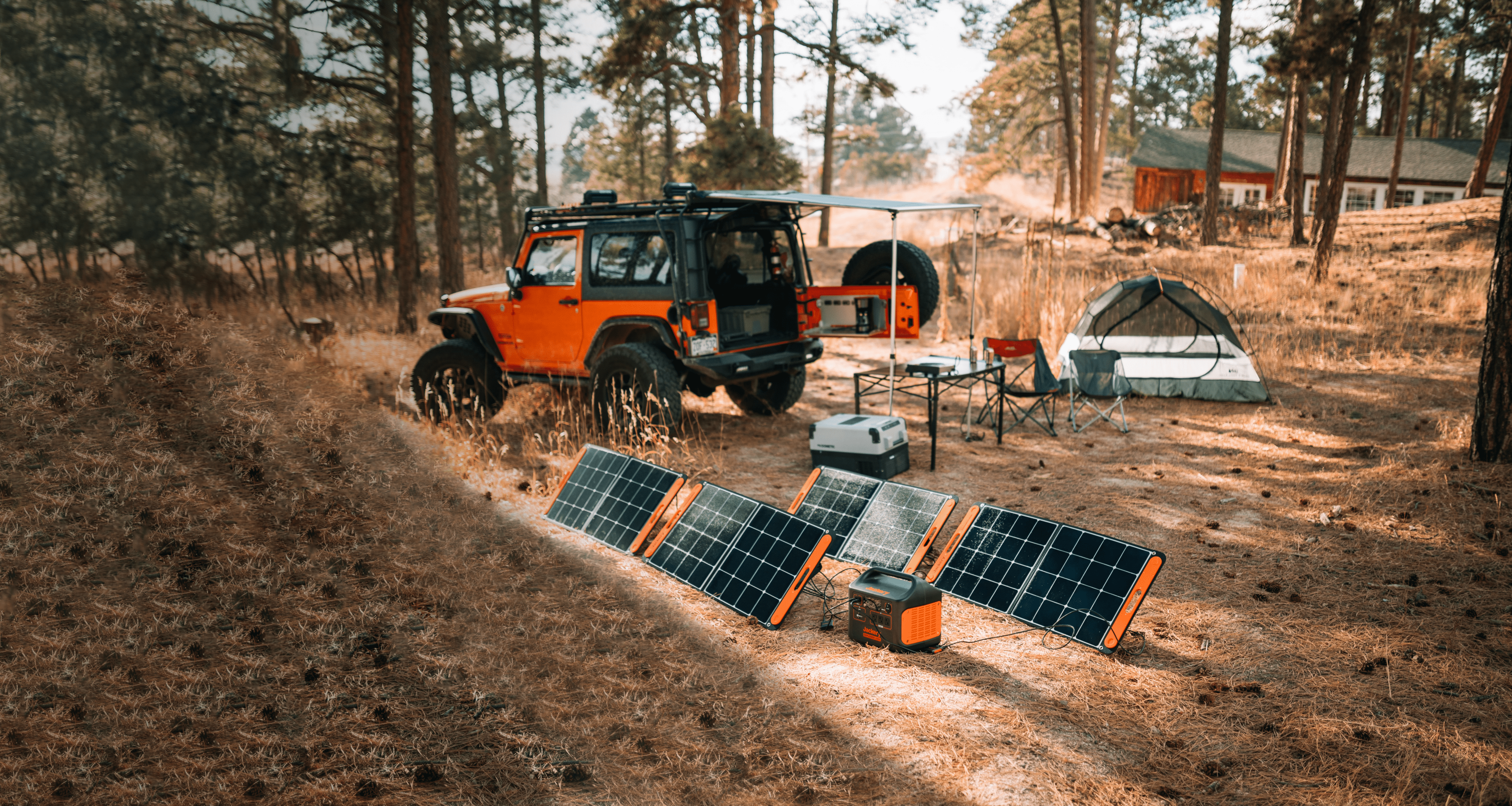Your camping appliances would not work without electricity. Similarly, living in a van can be more bearable with the addition of the best solar generator for RV and van life. A portable solar generator can be exactly what you need if the thought of building a whole camper van electrical system bothers you.
You can keep your appliances going all day long without needing any electrical expertise and with very little setup time, even if you're completely off the grid.
While camping and living in an RV in remote locations, I've tested numerous solar generators and compared them to determine the most effective ones.
Read this buying guide to learn more about the features to look for in a portable solar generator for use while camping, living in a van, or travelling in a recreational vehicle.
What Is a Solar Generator?
A solar generator is a machine that transforms energy from the sun into an electrical current. It is a large battery pack with an AC/DC inverter that can produce 110 and 12 volts of electricity.
But in technical terms, it isn't a generator. Instead, this structure serves as a power plant. Solar panels produce electricity when you plug them into your solar power station.
If you're taking your luxuriously converted Sprinter on the road, you may want to invest in a more powerful solar generator. We've identified the most efficient solar generators to power your home's appliances, including the lights, refrigerator, and blender.
1. MARBERO Portable Power Station 88Wh Camping Lithium Battery Solar Generator
- EFFICIENT CHARGING: Use the adapter included in the package to...
- COMPACT & PORTABLE DESIGN: Super slim size(6.5 x 4.6 x 3.1...
- MULTI-OUTPUT: There are 8 output ports could be used at the same...
- BRIGHT LIGHTS: With three levels of brightness, the portable...
- SECURED & ASSURED: The Battery Management System (BMS) allows for...
The MARBERO Portable Power Station has a storage capacity of 88Wh and is designed for outdoor adventures, emergencies, and small electronic devices. It features multiple output options, allowing you to power USB gadgets, small AC appliances, and DC devices with ease.
The MARBERO power station includes an LED flashlight with SOS mode, making it a reliable companion for camping and emergency situations. Weighing just 2.4 pounds, it is lightweight and compact, ensuring effortless portability.
It can be recharged via a 12V DC input using a car charger, a wall outlet, or a compatible solar panel, offering flexibility for off-grid use. This makes it a suitable choice for short camping trips or backup power needs.
Pros:
Cons:
2. Westinghouse iGen160s Portable Power Station
- VERSATILE OUTLETS CHARGE UP TO 9 DEVICES AT THE SAME TIME:...
- HOURS & HOURS OF POWER ON A SINGLE CHARGE: 155 Watt-Hours of...
- SMALLEST, LIGHTEST PORTABLE POWER STATION IN ITS CLASS: At 3.75...
- CHARGES AT HOME, ON THE GO, OR IN THE FIELD: Charges to 80% in...
- ECO-FRIENDLY POWER GENERATOR: Reduce Your Carbon Footprint for...
As one of the lightest (at 3.75 pounds), and most efficient solar power systems available, the Westinghouse IGen 160s is a convenient choice for travelers. Not only that, but the price is also incredibly reasonable.
The IGen 160s is an excellent low-cost choice if portability and short vacations are your top priorities. However compact it may be, it provided me with enough power outlets to charge my nine devices simultaneously. There's a lithium-ion battery inside with a capacity of 155Wh.
The IGen 160s are compatible with solar panels, standard wall outlets, and even a car connector for charging. If you plug it into the wall socket, it will take about six hours to charge to 80%; using a vehicle port or solar panels will take about seven hours.
Pros:
Cons:
3. ALLWEI Portable Power Station 300W(Surge 600W), 280Wh Solar Generator
- 【Empower Your Life】The outdoor generator has 280Wh 78000mAh,...
- 【Fast Charge】It can be recharged by AC Wall Charging, car...
- 【Power 9 Devices】With 9 AC USB DC ports, the battery...
- 【Lightweight Portable】The solar generator for home use with...
- 【Warm Tips】Please charge your devices within 300 watts...
The ALLWEI Portable Power Station offers a 280Wh battery capacity and a 300W continuous power output (600W surge), making it a solid option for outdoor adventures and emergency backup power. It comes with multiple output ports, including AC outlets, DC ports, and USB (including USB-C), allowing you to charge a variety of devices, from smartphones to small appliances.
This power station features an LCD display for monitoring battery levels and an integrated LED flashlight for convenience. Weighing 6.5 pounds, it is relatively portable while providing more power than ultra-compact models.
It supports three charging methods—solar panels, a wall outlet, and a car charger—offering flexibility for outdoor use. While it delivers decent power, it may not be enough for high-energy appliances like electric kettles or space heaters.
Pros:
Cons:
4. BLUETTI EB3A Portable Power Station
- [30 Min Fast Charging] - A single charging cable effortlessly...
- [Tiny but Mighty] - With a 600W AC inverter, 268Wh LiFePO4...
- [Harness the Power of Sun] - The built-in MPPT controller...
- [Safe & Reliable] - EB3A with LiFePO4 cells, recharges over 3000...
- [What You Get] - BLUETTI 268Wh portable power station EB3A, AC...
The BLUETTI EB3A is a compact yet powerful 268Wh LiFePO4 power station designed for camping, emergency backup, and off-grid adventures. With a 600W pure sine wave inverter (1200W surge) and multiple output options, including two AC outlets, USB-A, USB-C, DC, and a wireless charging pad, it can efficiently power small devices like laptops, cameras, and mini-fridges.
One of its standout features is ultra-fast charging, reaching 80% in just 30 minutes using a 430W AC+solar dual charging setup. The LiFePO4 battery ensures long lifespan and durability, making it a reliable option for long-term use. Weighing only 10.1 pounds, it is highly portable and travel-friendly.
It supports multiple charging options, including solar panels (up to 200W input), AC wall charging, and car charging, offering flexibility in various scenarios. However, with its 268Wh capacity, it is best suited for small appliances rather than high-power devices.
Pros:
Cons:
5. Dabbsson DBS2300 Portable Power Station
- [???????????????????????????????? ????????????????...
- [???????????????????? ???????? ????????????????????????????????...
- [???????????????????????????????????????? ????????????????????...
- [4 ???????????????? ???????????????? ????????...
- [15???????? ????????????...
The Dabbsson DBS2300 Portable Power Station is a high-capacity 2330Wh power station designed for home backup, camping, and emergencies. With 5×2200W AC outlets (max surge 4000W), it can handle heavy-duty appliances like refrigerators, power tools, and even some electric stoves.
Its semi-solid state LiFePO4 battery offers enhanced safety and longevity, while expandable options allow you to increase the total capacity up to 8330Wh with additional battery packs. Weighing around 60 pounds, it is less portable than smaller models but ideal for home and RV use.
It supports multiple charging options, including solar (up to 3000W input), wall outlets, and car charging, ensuring flexibility for off-grid power. While it’s a premium option, the price and weight may not suit casual campers or light users.
Pros:
Cons:
How to Charge Portable Power Stations

The versatility of solar generators is one of their best features for van living. Most van-life solar generators have three different charging options. This gives you great freedom regarding where and when you charge up, regardless of the weather.
1. Solar Power
The most basic and straightforward approach is to use solar energy to recharge your solar generator. A solar generator can have a solar panel, or a set of solar panels, connected to it to recharge a battery.
If you need to power your generator, this is a great way to use the sun's energy wherever you are.
2. DC Outlet
You can also use the 12v DC outlet in your car to recharge your solar generator. The power for the "cigarette lighter," also known as the circular outlet, comes straight from the battery in your car.
These chargers can be purchased separately or may be included in the package. Using this strategy, you can keep your generator powered up even when traveling. For example, it works perfectly to recharge the solar generator in your camper van.
3. AC Charging
Alternating current (AC) charging through a shore power connection or another AC power source is the third and final choice for solar generators' power sources.

Connecting a generator to a typical 110v outlet can charge it at home or from a campground. In most cases, this is also the quickest method of charging your solar generator. Plus, many solar generators allow you to combine charging techniques, the three mentioned, for a faster charge.
What Should You Consider When Buying the Best Solar Generator for RV?
1. Battery Capacity
Battery capacity, often defined in watt-hours (Wh), defines how much energy your batteries will store. The larger the battery, the more energy it can hold and the longer your electronics will run before recharge.
2. Battery Type
Lead-acid and lithium-ion are the two most common types of batteries. Lithium-ion batteries are far superior to lead-acid batteries because of their higher energy storage capacity, lower maintenance needs, and longer lifespan.
3. Inverter
Most electronic devices require alternating current (AC) to be charged, while batteries only provide direct current (DC).

Devices that use 12 volts of DC power, such as those that plug into a car's charger or cigarette lighter, are commonplace. However, the 2- or 3-pronged socket on most domestic appliances, which correspond to the 110, 120, and 130-volt range, is AC power.
Find high-efficiency generators that have been proven to use a pure sine wave inverter if you want better electricity with less energy loss during the DC/AC inversion process.
4. Power Output
Power output is the maximum wattage that a gadget can produce before the circuit breaker trips and shuts down. The Jackery 1500, for instance, is a portable power station that can deliver up to 1800 watts of power. In contrast, the Jackery 300 can only output 500 watts at once.

However, it's not advisable to maintain output at a rate higher than 30% of the system's maximum capacity. Consequently, the total power consumption of everything you're running off a Jackery 1500 shouldn't be more than 540 watts.
It's important to note that the 1800-watt capacity is intended for very brief bursts of activity, not continuous operation.
The greater the generator's power output, the more appliances it can support. Again, it all boils down to what you need.
5. Charging Time
Different solar generators charge at different rates. For instance, most Ecoflow solar generators charge far more quickly than their competitors; this is one of their selling advantages.
Some people may value a quick charging time more than others. However, remember that a faster charging time typically translates into a quicker depletion time, so faster isn't always better.
6. Dimensions and Weight
There are many different sizes and styles available for portable solar generators. You should strike a balance between how much power you need and how portable you want it to be.

Some of the more powerful solutions listed here are transportable, but they are quite bulky and take up a lot of room. Those with less strength can be easily transported. Determine how much electricity you'll need, then pick a generator that can provide it while yet being conveniently carried.
7. Price
Given a choice between two generators, if one is somewhat superior but significantly more expensive, I'd go with the less expensive one. However, this is again a matter of taste. Solar generators are pricey, though you get your money's worth.
Frequently Asked Questions (FAQs) on Solar Generators for RV
1. What can a solar generator with 1000 Watts of power do?
A 1000-watt generator can power several smaller devices, including lights, computers, coffee machines, dishwashers, and a slow cooker. Furthermore, they can power your flat-screen TV, portable fridge, and small power tools.
2. What Size Solar Generator Is Required to Power a Refrigerator?
The fridge's capacity is a key factor in this. A 1000-watt generator is sufficient for powering a small portable fridge designed to be used in a recreational vehicle or while camping. However, home refrigerators will need at least 2000 watts of power.
3. Are Solar Generators Practical for Daily Use?
A solar generator can be used daily as long as it is kept in good working order. However, you shouldn't leave it running nonstop. Here are some pointers for maintaining your generator:
- First, use it only once every 8 to 16 hours.
- Never use more than 95% of its charge capacity
- Instead of storing it at full charge, do so at 30–50%.
If you follow these guidelines, your generator will serve you well and last as long as possible.



















